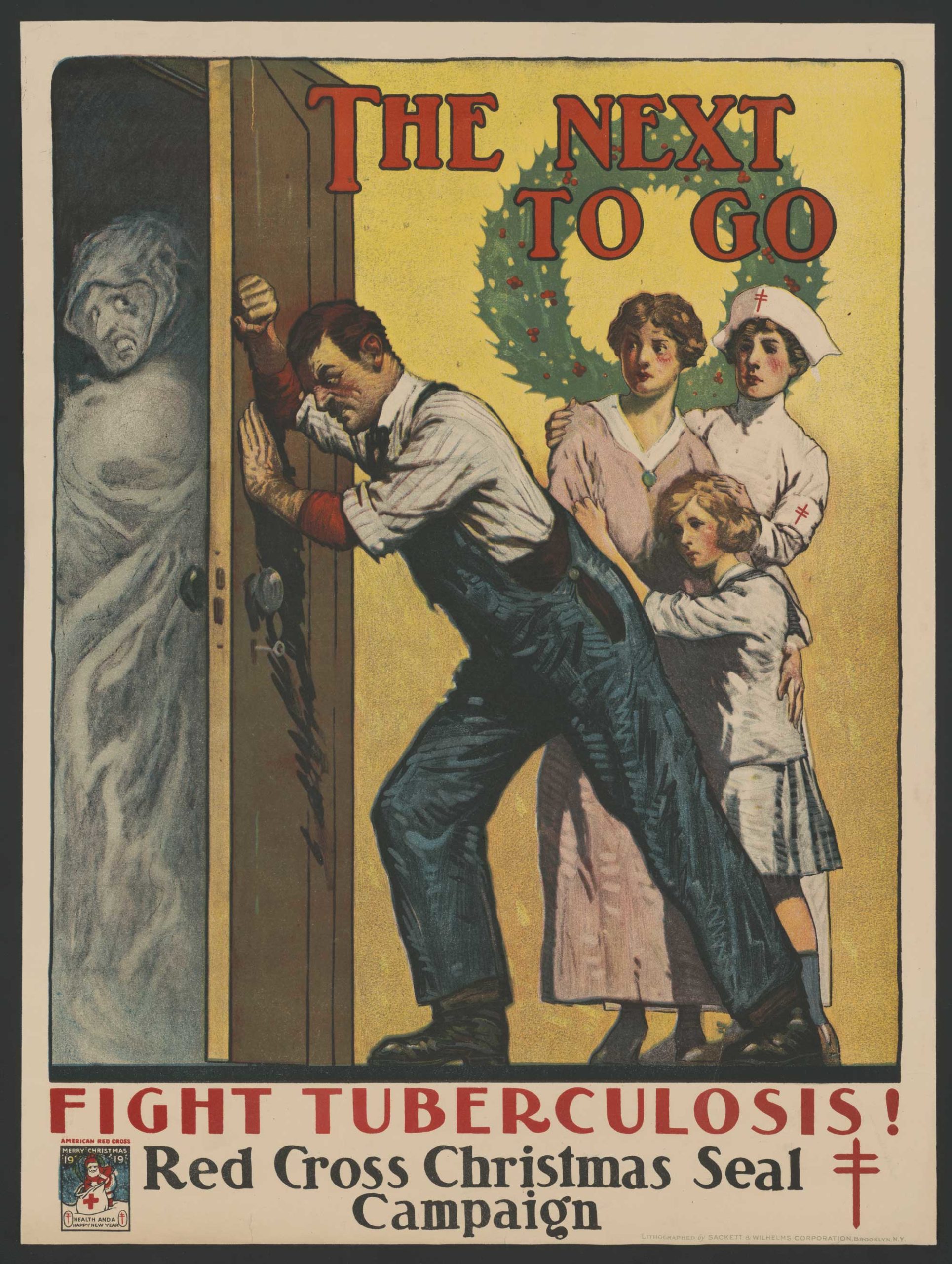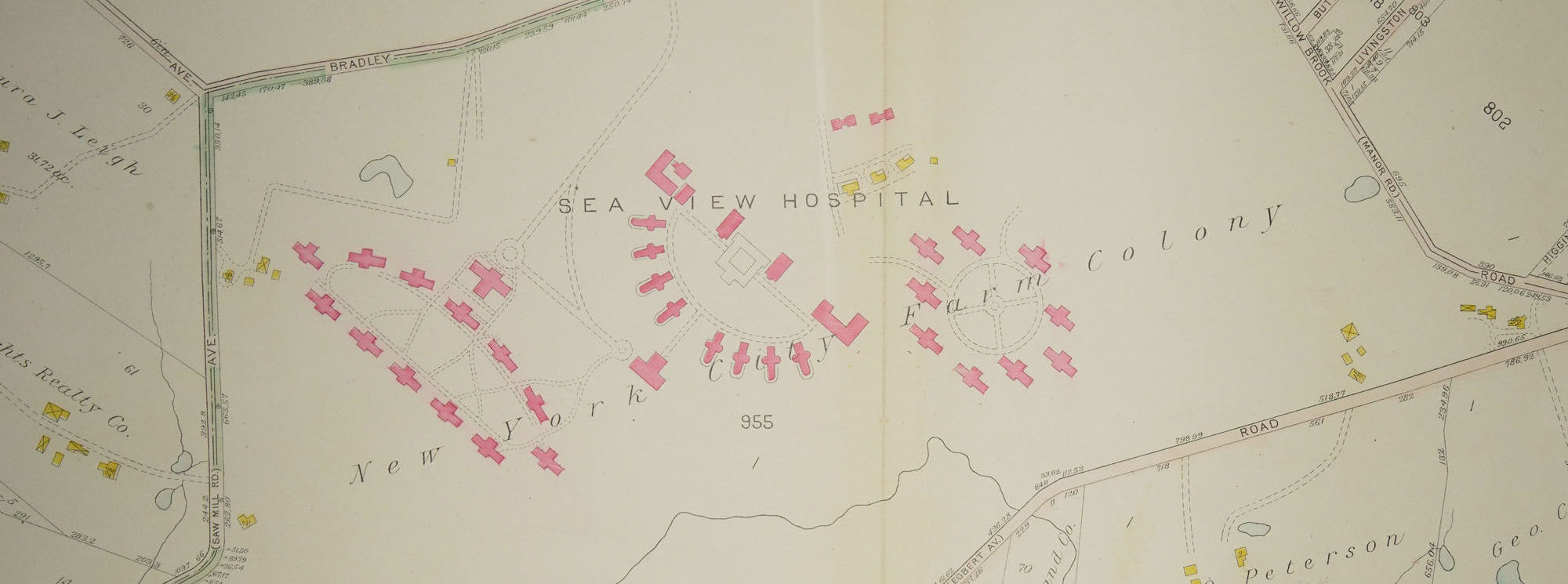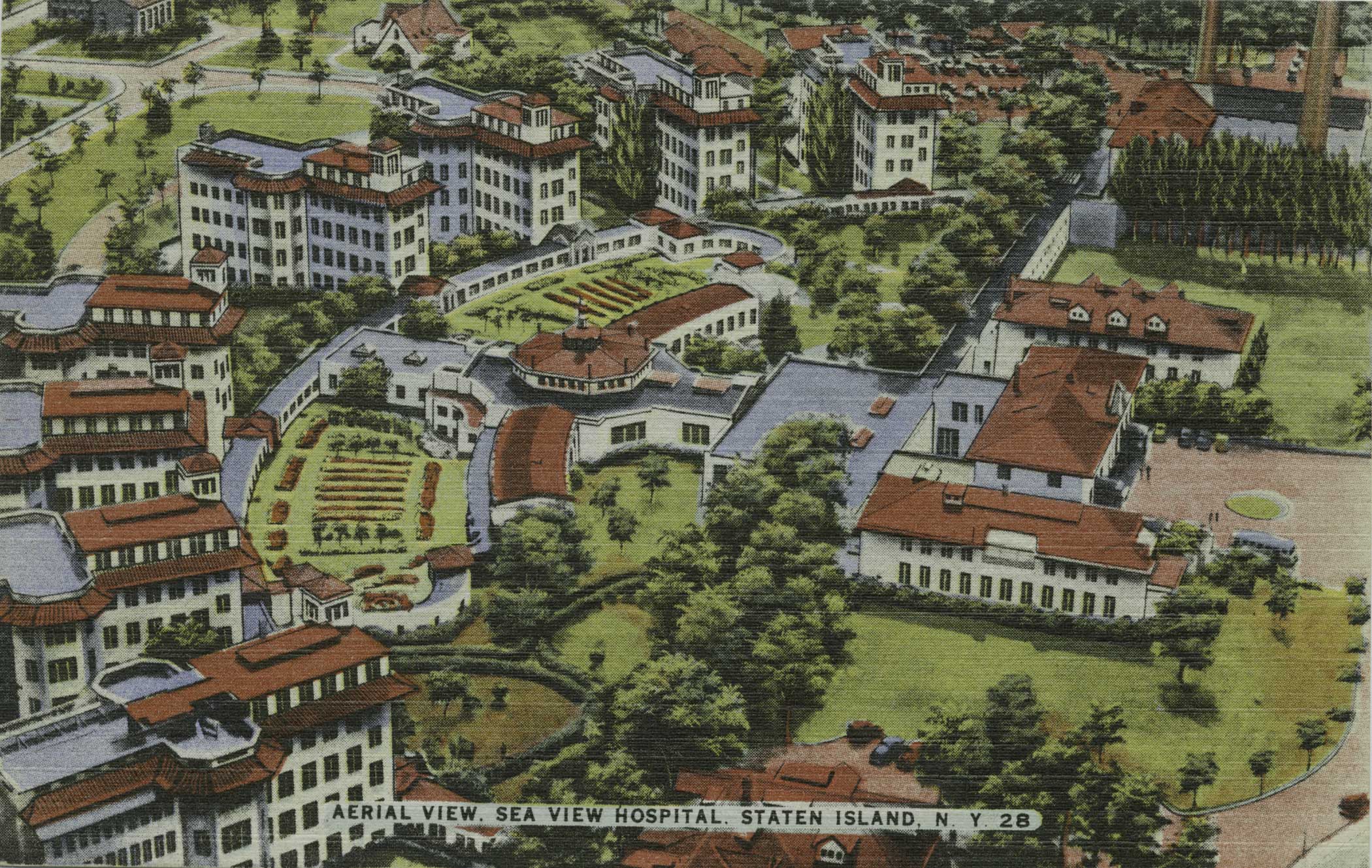
American National Red Cross, 1919 Library of Congress | 2015646531
Protecting Public Health
Seaview Hospital opened on Staten Island in 1913 as one of the public hospitals administered by the City of New York and dedicated to the treatment of tuberculosis. Seaview was a refuge for the city’s poor and immigrant populations, whose living conditions made them particularly vulnerable to tuberculosis, a chronic, contagious disease that usually affects the lungs, but can also affect other organs. At the time Seaview opened, tuberculosis was a leading cause of death among New Yorkers, killing over ten thousand people in the year 1910 alone.
It was only in the preceding thirty years that scientists began to understand the microbial origins of diseases, spurring a new age in their prevention, detection, and treatment. In 1887, the federal Public Health Service founded The Hygienic Laboratory on Staten Island “to apply the methods…of bacteriology to the diagnosis and study of epidemic diseases.” The National Institutes of Health grew out of this facility and marked a new era of federally funded scientific research. It was only five years earlier that the German physician Robert Koch had discovered the bacterium that causes tuberculosis, later named Mycobacterium tuberculosis.
In the period following these developments, cities and public health authorities began to realize that if tuberculosis was contagious as opposed to hereditary, they could institute measures to slow its spread. In 1889, New York City’s Department of Health became the first such agency in the nation to declare tuberculosis a communicable disease. In the 1890s, the city instituted measures such as required reporting of tuberculosis cases and isolation of patients. These measures quickly filled tuberculosis wards leading to the opening of dedicated hospitals and sanatoriums. The consolidation of the five boroughs of Brooklyn, the Bronx, Manhattan, Queens and Staten Island in 1898, meant an increase in the number of tuberculosis patients in municipal hospitals. In 1902, New York City opened “the nation’s second municipal tuberculosis hospital facility” in a dedicated section of Metropolitan Hospital.

While the early 1900s saw important advances in the identification and prevention of tuberculosis infections, treatment options for the disease were still limited. The core strategy was rest, sunlight, and fresh air, a concept central to the design of Seaview Hospital on Staten Island, which the city approved for construction in 1905. The hospital, consisting of eight airy patient pavilions, an administrative building, staff housing, a surgical pavilion, a laundry, and a kitchen, was laid out in a sprawling design on a Staten Island hilltop, which maximized ventilation and exposure to sunlight. A children’s hospital was constructed on the site from 1935 to 1937.
